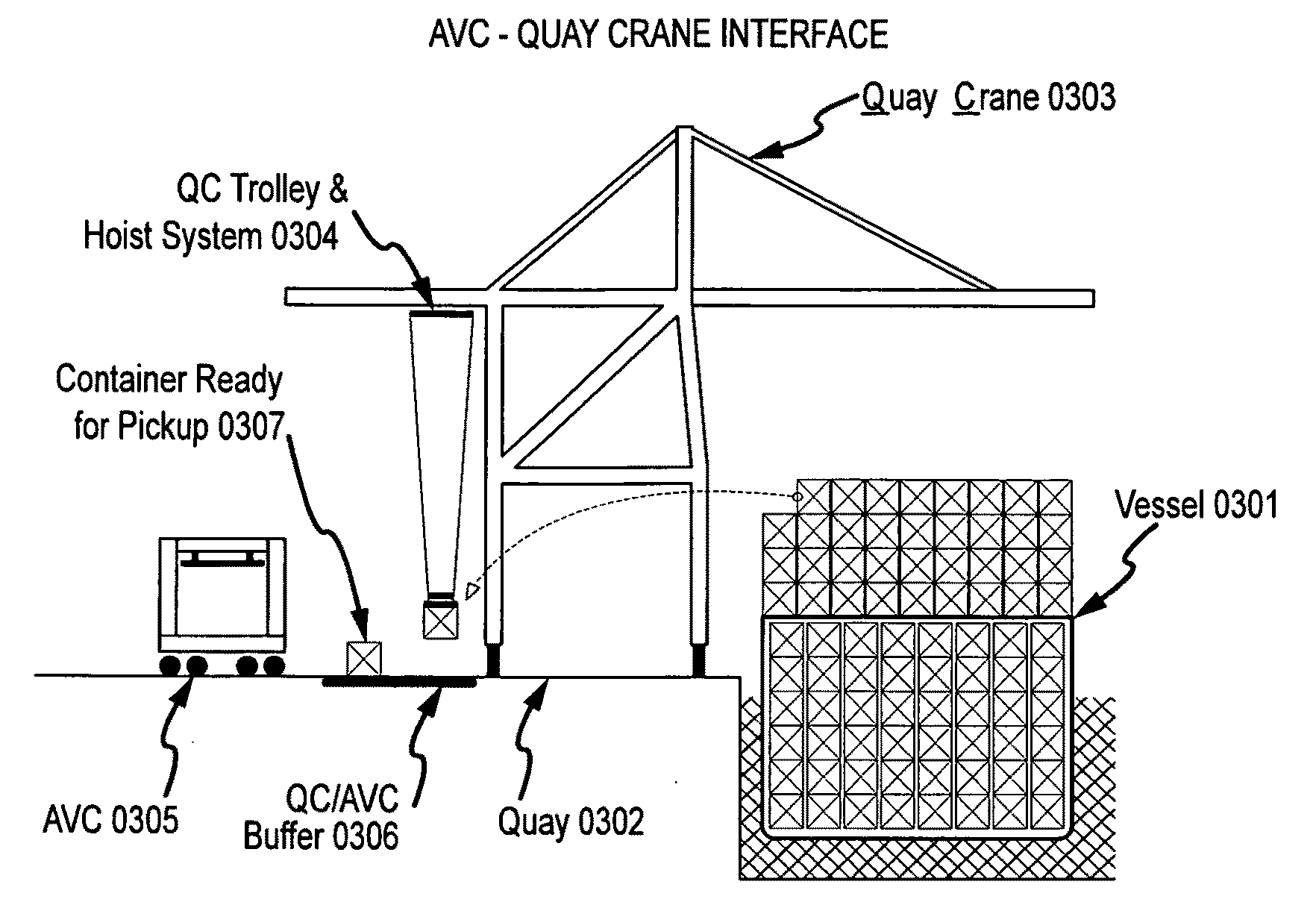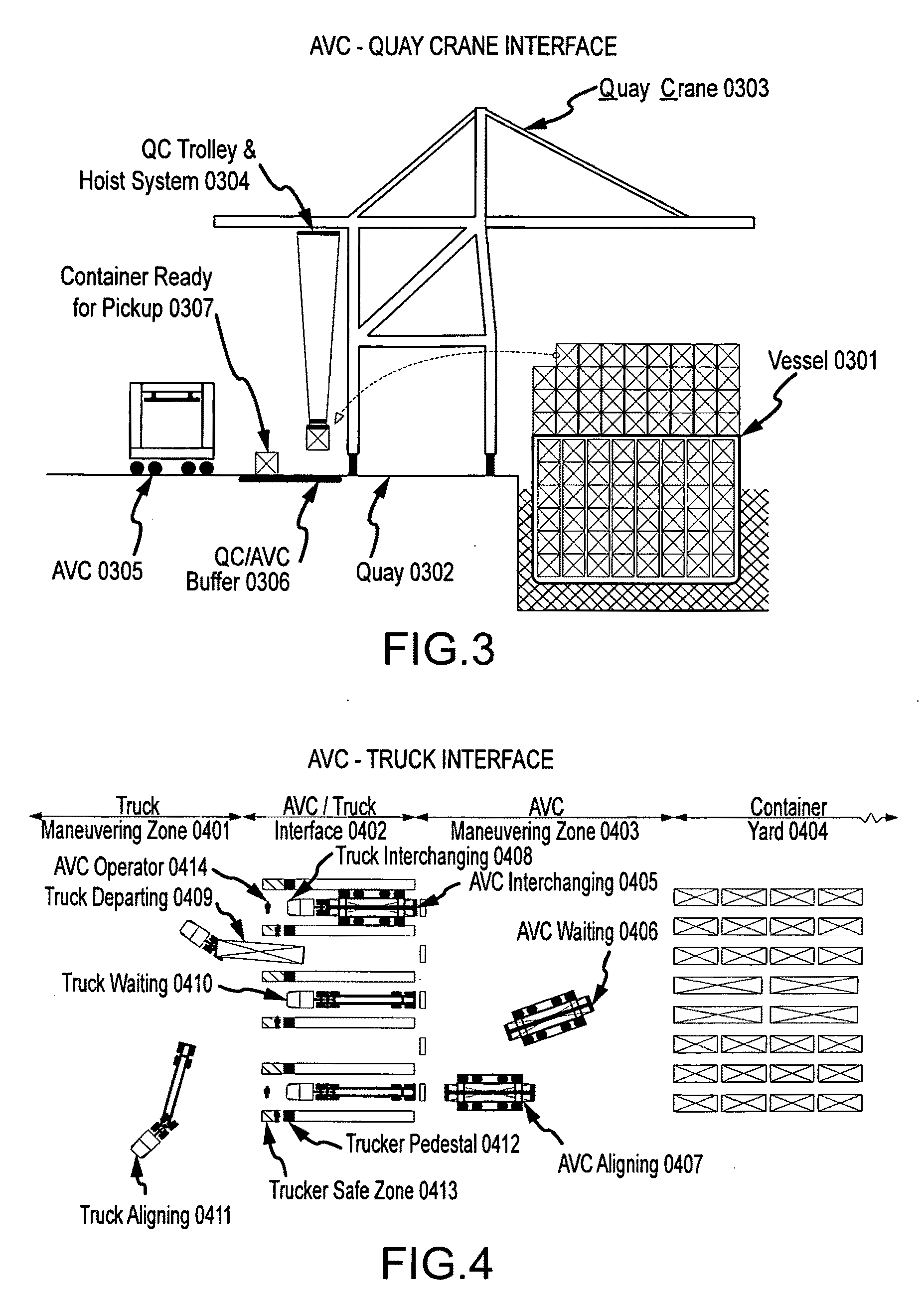One of the difficulties in designing port facilities is that each site is different.
The demanding physical environment outdoors on the waterfront has made it very difficult to develop effective and reliable
instrumentation to substitute for human capabilities in port facilities.
Container securing devices known as “inter-box connectors” (IBCs) or “cones” are used to hold containers in place on waterborne vessels, and can only be effectively handled by workers.
The complex, variable, and demanding environment of the port container terminal has resisted the development and deployment of automation systems.
The ASC / manned interface buffer is a complex area, with many safety interlocks intended to protect human workers, with “fail-safe” design that prohibits operation if the safety interlocks are determined to be dysfunctional for either mechanical or environmental reasons.
The ASC / manned interface buffer must be well-lit for safety under all operating conditions, contributing to night-time
light pollution.
It is generally very difficult or impossible for two such ASCs to share work at the end interface zones: one ASC must be dedicated to serve each end of the storage block.
In general, the landside ASC cannot be used to augment productivity on the waterside end of the block, and vice versa.
In the “nested rail” ASC configuration, the larger and smaller ASCs can pass one another, albeit with limitations designed to prevent loads being carried by the larger ASC from colliding with the smaller ASC during gantry movement.
The two ASCs can be used together to augment productivity at one end of the block or the other, but safety limitations prevent taking maximum
advantage of this capability, especially at the landside end of the block where manned transport vehicles are being served.
This configuration has high storage density and high terminal capacity, but less productive flexibility than the “nested rail” configuration.
For terminals with a limited land depth, this paradigm limits the terminal's storage capacity and can make automation of the facility unfeasible.
The TOS is an essential
management tool, but most TOS packages were not designed to support or direct robotic automation of container handling.
The primary difficulty facing TOS and ECS joint development is the blending of two sets of activities: 1) fully-robotic, predictable, plannable container movements that do not need to protect workers; 2) manned, unpredictable, unplannable container movements that involve substantial robotic safeguards for workers.
Theoretically, the TOS has data describing future logistical demand, but these data are frequently imperfect and are never at the level of “tactical
granularity” required for the ECS to perfectly understand future demand.
The artificial intelligences embodied in the ECS cannot create the “perfect solution” for every array of competing tasks and activities because they cannot predict future manned operating demand or performance.
There is no settled paradigm for establishing or applying such corrections.
5) The blending of manned and robotic operations leads to unpredictability in the demand on the robotic system and complexity in the relationship between workers and robots.
6) Terminal and equipment control systems cannot fully optimize equipment and
resource allocation because of the inherent randomness of mixed manned / robotic operation.
7) The need to separate manned and robotic in-terminal transport has limited the applicability of ASC-based systems to terminals with greater land width perpendicular to the
wharf.
 Login to View More
Login to View More  Login to View More
Login to View More 


